Hunting Iguanas in South Florida: Conservation, Challenge, and Cuisine
Article by Guest Contributor: VENKU.com
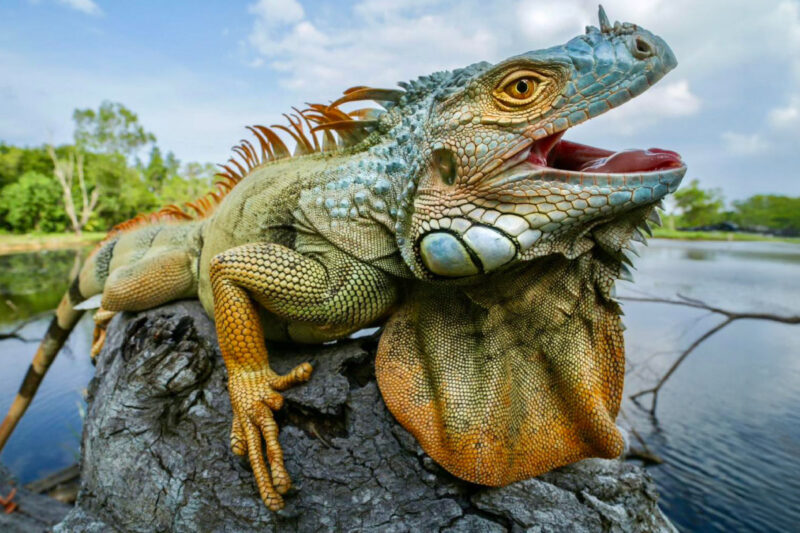
Florida’s warm climate and lush landscapes make it a paradise for all kinds of wildlife—including some wildlife that dosen’t actually belong there. While they seem to be a Floridian novelty, iguanas are not native to the state and first arrived in the 1960’s as stowaways on ships from Central and South America. In some areas where predators are few and habitat is plentiful these lizards can grow as large as five feet and are the cause of all sorts of problems including destruction of vegetation of other animals as well as serious damage to structures of all kinds.
The good news? Hunters like you can help control the population and even enjoy a one-of-a-kind hunting experience along the way.
They can be a challenging target! Captain Michael Onega, a top-rated iguana hunting outfitter, shares his top gear picks that have helped him maintain an unbelievably high success rate on his guided hunts in South Florida.
Why Are Iguanas Considered Invasive?
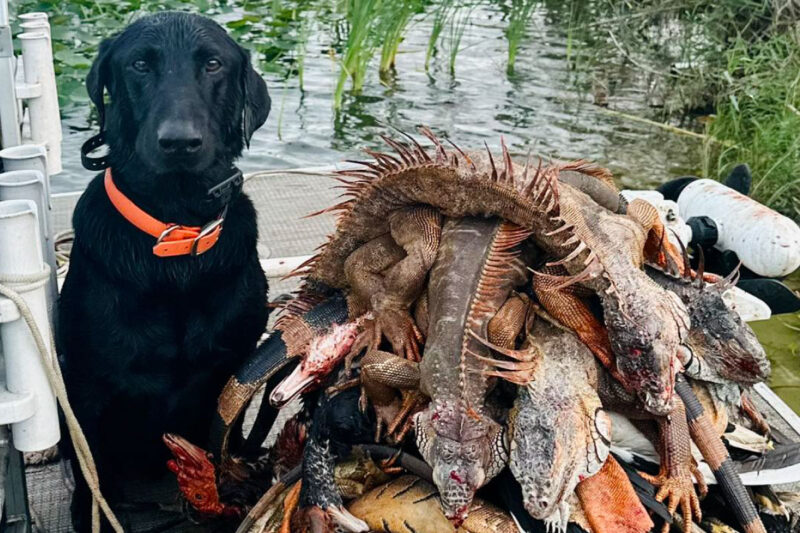
For a little bit of background, green iguanas first arrived in Florida in the 1960s through the pet trade. Some escaped, others were released, and before long, they started multiplying—fast. Now, they can be found lurking in the mangroves, along the canals and have made their home generally everywhere in South Florida. These reptiles munch on ornamental plants, fruits, and vegetables, destroying gardens and landscapes. Even worse, their burrowing habits weaken sidewalks, seawalls, and canal banks, leading to expensive repairs. Because of these issues, Florida classifies them as an invasive species, and the state encourages residents and hunters to help manage their numbers.
How Florida is Enlisting Hunters
To keep the iguana population in check, the Florida Fish and Wildlife Conservation Commission (FWC) allows people to hunt iguanas year-round—no permit or license required! You can legally remove them from private property with the landowner’s permission, and there are even 32 public lands in South Florida where you can hunt them without needing any special permits. This means you can step in, do your part for conservation, and enjoy some great hunting in the process. It’s not always an easy task, though.
Captain Michael says, “One of the most common misconceptions is that an iguana is an easy species to kill. Most people don’t realize that an iguana skull is extremely tough, and it can take a lot of velocity and a strong, well-placed shot to take this creature down.” This is where Captain Michael comes in – he equips hunters with the necessary tools to combat these scaly invaders, while also treating them to an iconic Florida experience.
Best Gear & Techniques for Hunting Iguanas
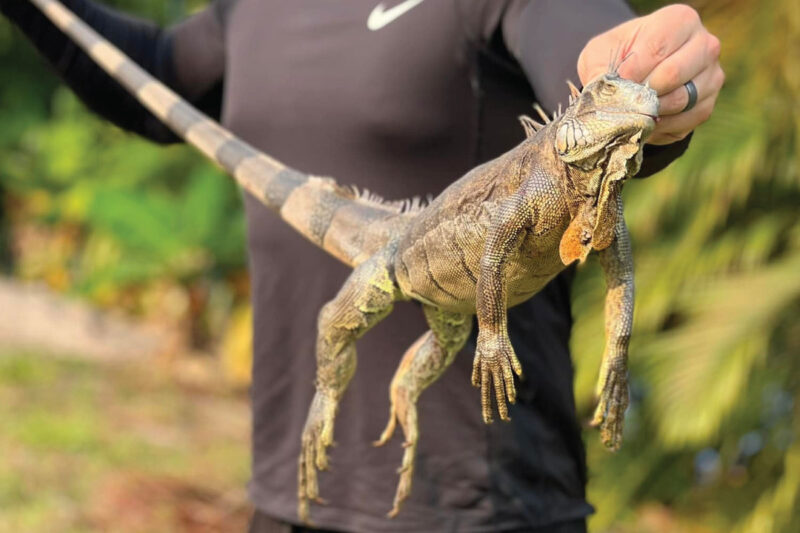
If you’re new to iguana hunting, it’s all about using the right gear and techniques. Air rifles and pellet guns are the most popular choices because they’re accurate and effective without being too powerful for hunting in suburban and urban areas.
Out of the various air rifles he’s tried, Captain Michael’s weapon of choice is the Air Venturi Avenge-X 25 caliber. He says, ”I like it for the amount of force that it puts out, as well as how quiet it is, and easy to use in the field. It’s been a great choice for me. It also has an unbelievable shot count.”
When choosing the right weapon for the job, there are a lot of factors that come into play. The main consideration is public safety — most iguana hunts take place in urban or suburban areas meaning the typical weapons you’d think of would be overpowered and could pose a risk to local residents. For that reason, Captain Michael prefers air guns that don’t have the same distance capabilities that a standard firearm would have when shooting a regular bullet. He also likes that the lead compound is more malleable than a brass tip. “This means that I cut down on ricochets, but most importantly this means that the bullet or projectile is going to lose its energy once it hits a target. This reduces property damage and ricochets, keeping this style of hunting safe and feasible in a city environment.”
For Captain Michael, the Air Venturi is a tried-and-true option, with high shot count and tight grouping. “It’s not like some cheaper guns or other brand names that don’t have the same velocity; this seems to hit the mark every time.” He opted for the upgraded bottle, which gives him much more air capacity, allowing upwards of 100 shots per fill.
For pellet guns, his standby is the Barracuda Hunter Extreme (28.24 gr).
Tips for Beginner Hunters

The target-rich environment of South Florida is the perfect backdrop for beginner hunters. For those who are just getting into the sport, Captain Michael suggests the light weight and affordable Umarex Notos Carbine .25, which comes equipped with a small tank that’s easy to fill with either a compressor or a pump. “Best of all, with the punch this sucker delivers in the 22 caliber version, you can wipe out an iguana, no problem!”
Captain Michael’s biggest tip for beginners and those coming to Florida to hunt iguanas for the first time, is target acquisition. “The faster you are at acquiring a target, the more iguanas you’re going to end up with!”
More iguanas keeps hunters, the Captain and his trusty sidekick Scout happy. Captain Michael says his greatest tool isn’t a gun or even his boat. It’s his retriever, Scout! He says, “Without him, what I do would be extremely hard. I would not be eradicating or capturing anywhere near as many invasive species as I do without him at my side.”
While you can hunt iguanas year-round, they’re most active in the warmer months. Daytime hunts are the most common, but for an extra challenge, some outfitters offer night hunts using thermal imaging to spot the reptiles when they’re tucked away in trees or burrows.
Hunting Regulations & Conservation Efforts
Even though iguana hunting is encouraged, it’s important to follow Florida’s wildlife laws. If you’re hunting on private property, always get permission first. And while iguanas are invasive, they’re still protected under anti-cruelty laws, so ethical, humane hunting practices are a must. Plus, it’s crucial to avoid disturbing native wildlife and habitats while you’re out there.
A Hunt Like No Other
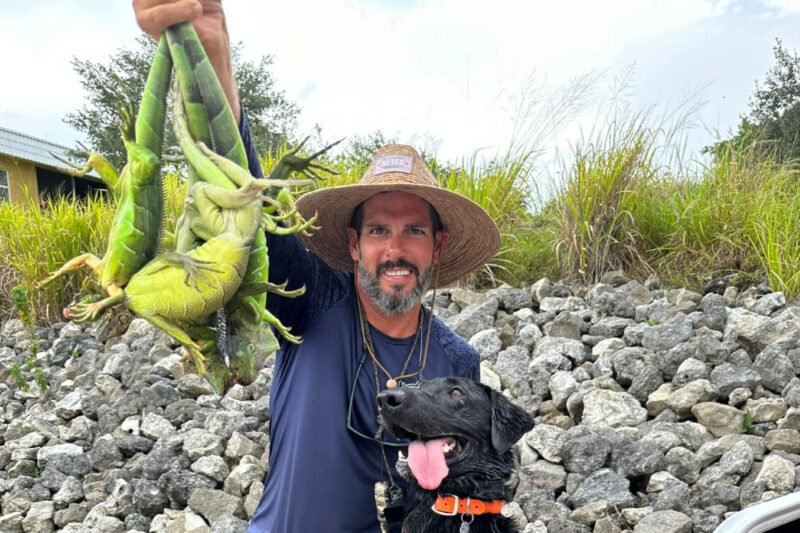
Hunting invasive iguanas in South Florida isn’t just an exciting challenge—it’s a way to give back to Florida’s ecosystems. “I routinely hear, from extremely experienced hunters, that this has been the best hunt of their life. It’s not often that you get to shoot from a moving boat and have the number of shooting opportunities on a hunt that we do,” Captain Michael states.
You’ll be protecting native wildlife, helping to prevent property damage, and experiencing a truly unique hunt.
PS to get up and closer to these predators, without getting too close, have binoculars in hand!
For more details on hunting regulations, planning your trip, or booking a guided hunt, check out the Florida Fish and Wildlife Conservation Commission’s website or connect with a local outfitter like Captain Michael on Venku.
CLICK HERE FOR MORE ARTICLES FROM VENKU OUTFITTERS OR CLICK THE LINKS BELOW:
Related Articles: Unlocking the Hunt: A Guide to Pronghorn Antelope Hunting in the U.S.
Related Articles: Firearms for Waterfowl Hunting in Canada: The Details
Related Articles: Get It Straight: Best Straight-Wall Cartridge Rifles For Hunting
Related Articles: The 5 Best Rifle Slings to Upgrade Your Hunting Rifle



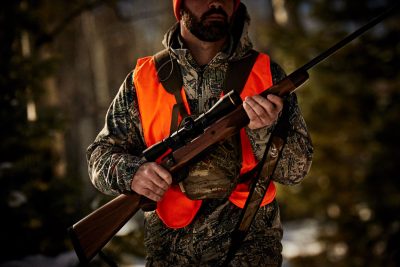




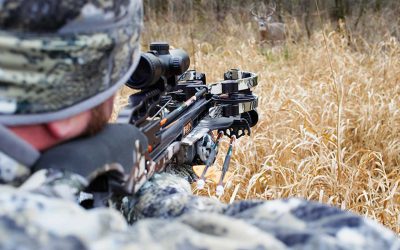
![Mossberg Patriot LR Tactical Bolt Action Rifle for Long-Range Fun & Hunting! [Video]](https://qacontent.gunbroker.com/wp-content/uploads/2023/05/Mossberg-Patriot_LR_Tactical-rifle-Right-facing-featured-400x267.jpg)
